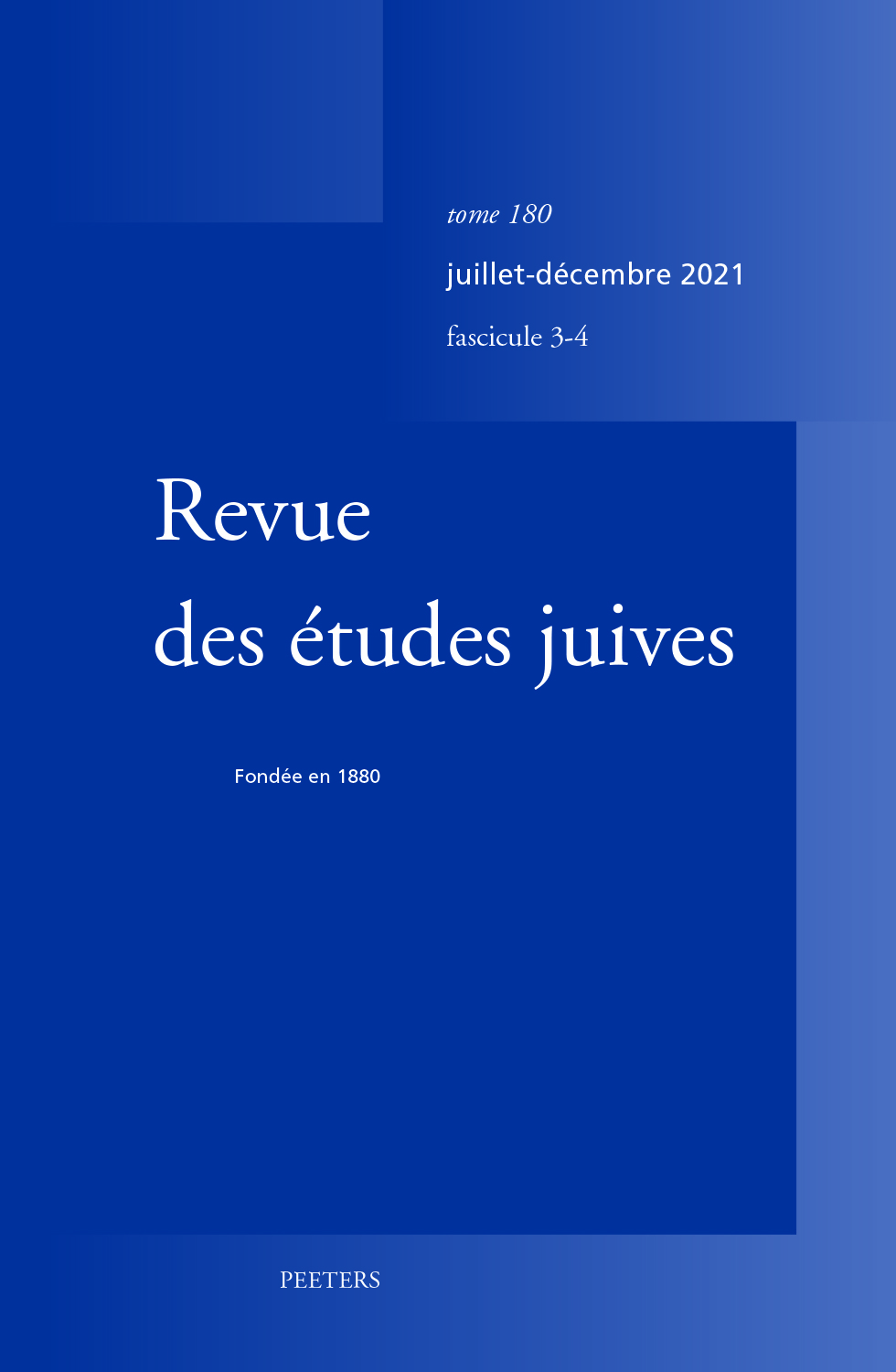 previous article in this issue previous article in this issue | next article in this issue  |

Preview first page |
Document Details : Title: Immanuel van Dort's Hebrew Translation of the Qur'ān and its Arabic Sources Author(s): BASAL, Nasir Journal: Revue des Études Juives Volume: 180 Issue: 1-2 Date: 2021 Pages: 97-121 DOI: 10.2143/REJ.180.1.3289438 Abstract : Immanuel van Dort’s Hebrew translation of the Qur'ān was not done directly from the Arabic source of the book but is third in the chain: French translation (du Ryer) > Dutch translation (Glasemaker) > Hebrew translation (van Dort). An analysis of this Hebrew translation from the Dutch translation of the Qur'ān in comparison with the original Arabic text reveals that the former is in fact a paraphrase containing Arabic Muslim interpretations of the Qur'ān; it is these which caused the translation to deviate from the source text. The deviations in question can already be found in du Ryer’s French translation, whence they entered Glasemaker’s Dutch version and, eventually, van Dort’s translation into Hebrew. The translation also contains an introduction on Muslim issues related to Muḥammad and his life. This material originates in Muslim sīra literature and like the translation is delivered in an informative and neutral manner without any polemical purposes. Moreover, this material is sometimes flatteringly presented to Islam and its prophet. This is not surprising because this translation was done by a converted Jewish scholar, a lecturer in theology at Colombo, Ceylon, far from the lands of Islam who wanted to broaden his horizons and had no motives to argue and quarrel with Islam. La traduction hébraïque du Coran d’Immanuel van Dort n’a pas été effectuée directement sur la source arabe mais s’inscrit en troisième place dans une chaîne de traductions, qui commence par une traduction française (de du Ryer), puis néerlandaise (de Glasemaker), et enfin hébraïque (de van Dort). Une analyse comparée de la traduction hébraïque effectuée à partir du néerlandais avec le texte arabe original révèle que la traduction est en fait une paraphrase intégrant des interprétations arabomusulmanes du Coran; ce sont ces interprétations qui sont responsables des déviations de la traduction par rapport au texte source. Ces dernières se retrouvent en fait déjà dans la traduction française de du Ryer, d’où elles sont passées dans la version hollandaise de Glasemaker, pour figurer enfin dans la traduction hébraïque de van Dort. En outre, la traduction contient également une introduction à des questions touchant à Mahomet et à sa biographie. Cette matière trouve son origine dans la littérature musulmane de la sīra et, comme la traduction, elle adopte, dans l’ensemble, un ton neutre et informatif dénué de visées polémiques, voire présente parfois l’islam et son prophète sous un jour flatteur. Ceci n’est pas pour surprendre, étant donné que la traduction est due à un érudit juif converti, professeur de théologie à Colombo, à Ceylan, donc loin des terres d’islam, qui s’était montré désireux d’élargir ses horizons et n’avait aucune raison particulière d’arguer ou de polémiquer avec l’islam. |
|


